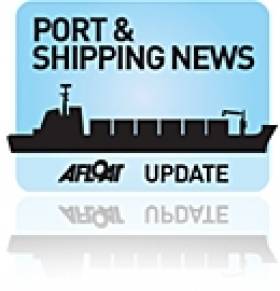Displaying items by tag: Falklands Conflict
#PORTS & SHIPPING REVIEW: Over the last fortnight Jehan Ashmore reported the shipping scene which saw President Higgins officially reopen the National Maritime Museum of Ireland in Dun Laoghaire.
The President was again on duty on the far side of Dublin Bay the next day to welcome the London Olympics 2012 Torch Relay on its first visit to the state in Howth Harbour, where the headquarters of the Olympic Council of Ireland are based.
The mid-west port of Galway was where the small German cruiseship Bremen made a port of call while at anchorage in Galway Bay.
Returning to the east coast in Dun Laoghaire Harbour, where the Water Wag's the oldest one design racing class in the world celebrate their 125 anniversary regatta week which culminates today.
Outside the harbour in Dublin Bay, the sight of a rig re-appearing was not for oil but for further preliminary work as part of the €220m Dublin Bay Project, where a new sewage pipeline outfall is to be built from Ringsend.
On the other side of the Irish Sea, the cruiseship Ocean Countess departed Liverpool City Cruise Terminal bound for Cobh. Her departure coincided on the 30th anniversary of the end of the Falklands Conflict, where in 1982, the cruiseship was used as a troopship to assist logistical operations after the 10-week long war ceased in June of that year.
























































